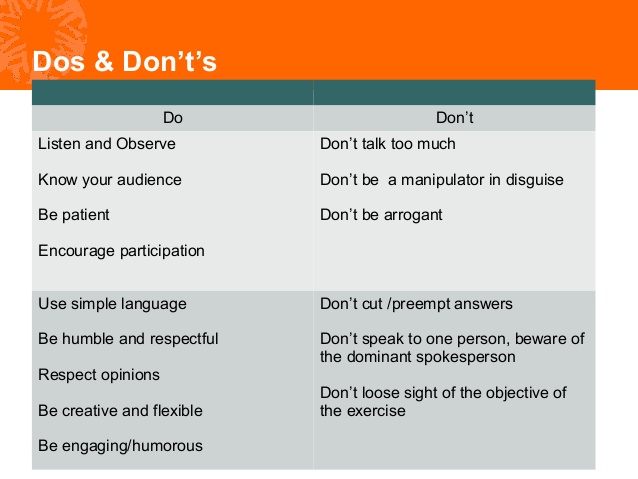Click here to view an explanation about the way you act and appear affects the way learners behave.
Resources: Click on the link/s below to open the resources about the actions of facilitators and the possible ways learners are affected.
Click here to view a video that explains the best and worst facilitator practices.
A facilitator is also an integral element of visualisation. In presenting your concept, your questions and summaries you are also presenting yourself. The most important thing is to be yourself and to understand and accept that you cannot copy any other facilitator. Your learners will notice any insincerity or lack of authenticity. You should, however, make sure you dress the part. The way you dress (up or down) will influence the way you are viewed and accepted by the group of learners.
Use your person to “visualise” your respect for and interest in the ideas and the people behind them – in the results and the learners. Prove you are doing so by losing little time in visualising the idea (writing it down for all to see!) and taking time to look the person in the eye. Stand still when listening; use upward arm-movements when stimulating thought and ideas and wait after activating your group to check if you’ve been understood and/or the learners accept the proceedings.
Don’t
- be overtly sexy or dressed to kill
- smile like a Cheshire cat
- look bored
- be a finger-wagging teacher
- be the world’s best comedian
- show utter amazement or ridicule at a statement from a participant
- fake ease or stage professional distance
- eat or chew gum
- get too close to individual learners unless seated within the group
- “disappear” from view or break mimic-contact in the middle of your sentence. Wait till you’re finished with what you’re saying before moving a flipchart or fetching your notes.
Think about the effects of your appearance and actions on the effectiveness of your facilitation.
In your role as the facilitator you need to be aware of the possible effects of the way you are talking, moving, gesticulating, sitting, standing and acting. Be open to feedback – however subtle – to your person. One golden rule: be very wary of physical contact with learners!
Click here to view an explanation about the effects of your appearance and actions on the effectiveness of the facilitation.
